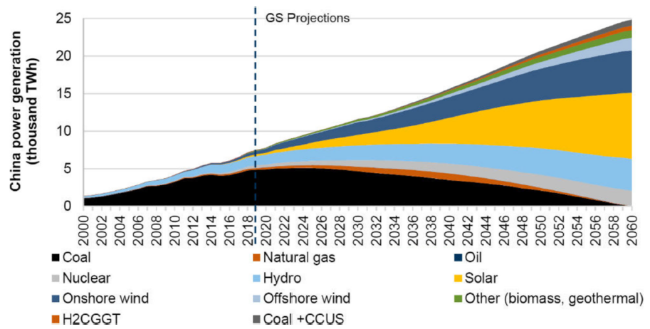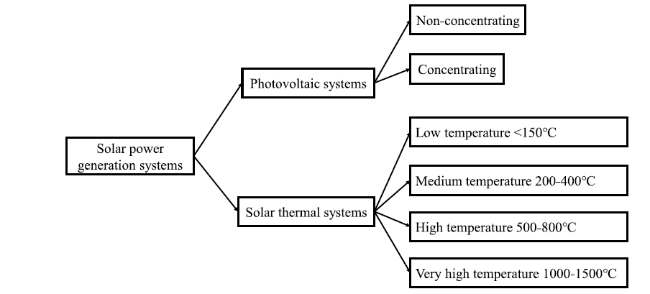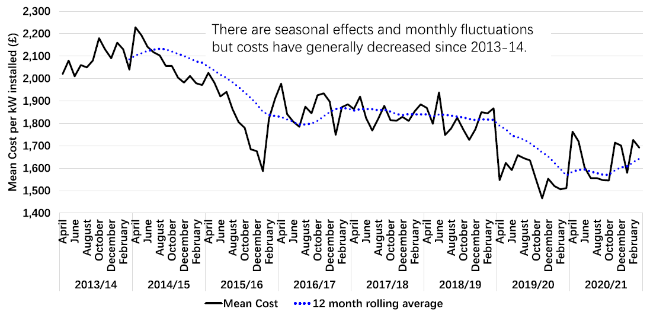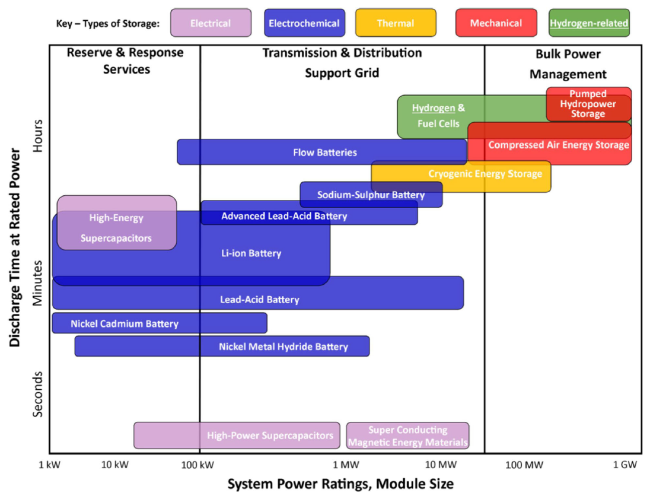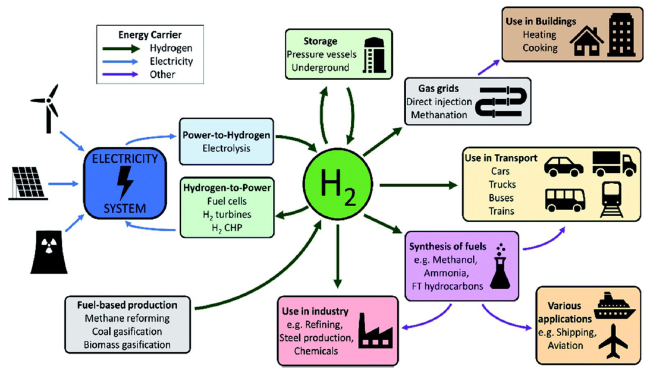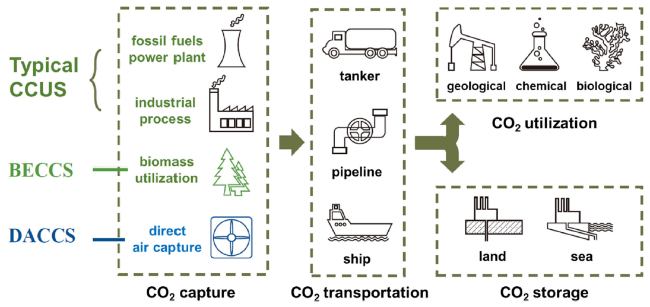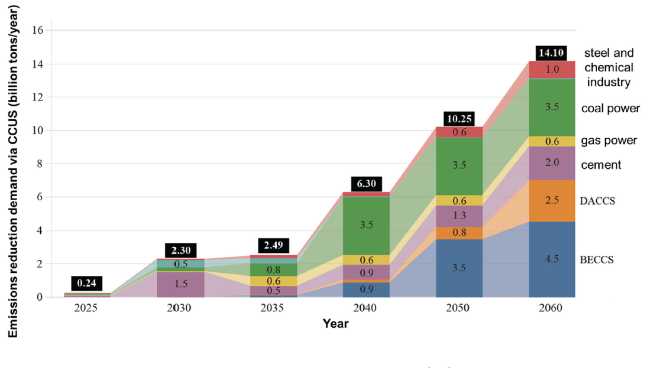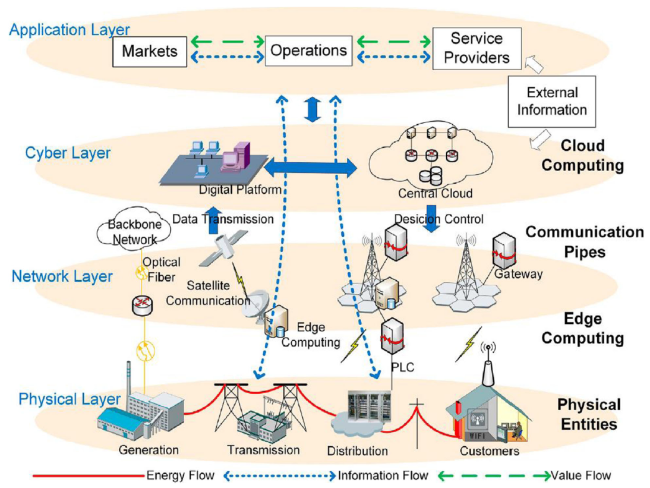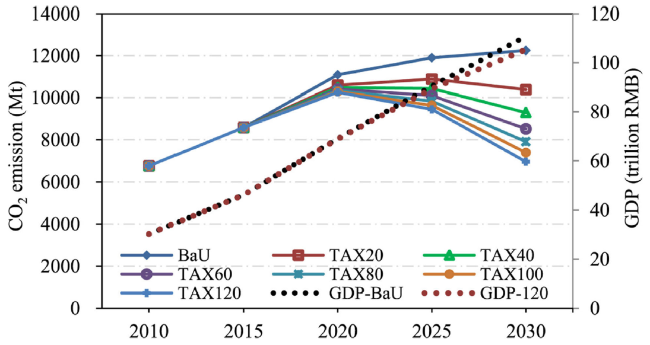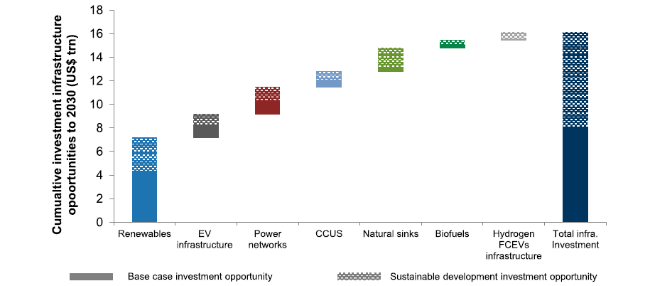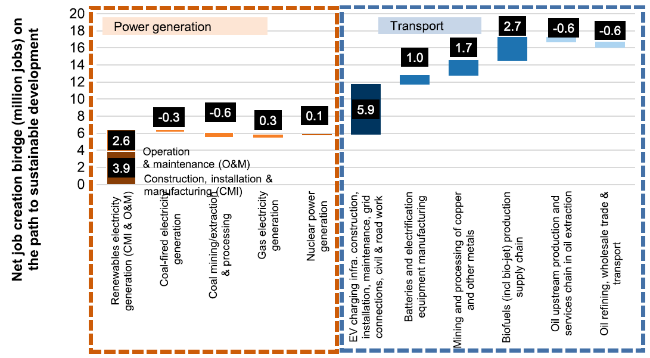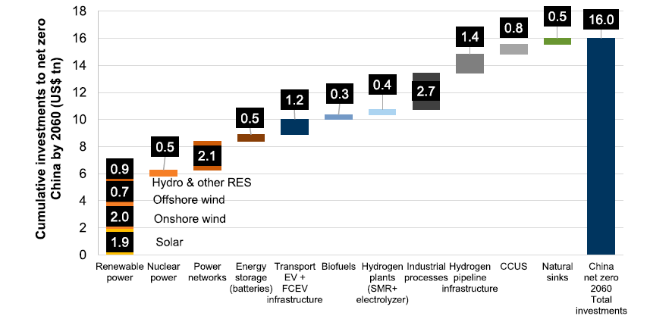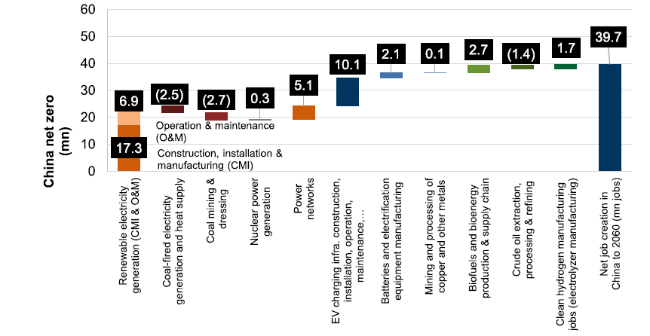In 2020, the global surface temperature was 1.19
∘C higher than that of the pre-industrial period (1880-1900), which was the second-warmest year on record [
8]. The Earth’s temperature has risen by 0.08
∘C per decade since 1880, and the rate of warming over the past 40 years has been more than twice of that: 0.18
∘C per decade since 1981 [
8]. Recent global warming since the Industrial Revolution around 1750, as shown in
Fig. 2, cannot be simply explained by natural causes, such as changes in solar activity, volcanic eruptions, and natural variations in GHGs concentrations, anthropogenic activities have contributed substantially to climate change by adding CO
2, CH
4, N
2O and other halogenated gases such as hydrochlorofluorocarbons (HCFCs), to the atmosphere. As shown in
Fig. 2, solar activity remains relatively stable over the last couple of centuries and volcanic eruptions only lead to temporary drops in global surface temperature. However, during the period of 1750 to 2020, atmospheric CO
2 concentration is rising at an unprecedented rate.
Figure 3 shows the global average CO
2 concentration in the atmosphere over the past 800,000 years. For a very long period of time, CO
2 concentration varies between roughly 180 and 300 ppm. However, over the last 100 years, CO
2 concentration has dramatically increased and the number reached 412 ppm in 2020, which is approximately 47% above the level prior to Industrial Revolution and probably the highest at least in the past 800,000 years. The annual rate of increase in atmospheric CO
2 over the past decade is also unprecedentedly high, which is about 2.4 ppm/year, according to the data released by the National Oceanic and Atmospheric Administration (NOAA) of the United States (
https://gml.noaa.gov/). CO
2 remains by far the most important positive anthropogenic global warming driving force, with CH
4 the next most significant one. By 2020, the global annual mean concentrations of CH
4 reached
1879.10 ppb, 159.6% increase since 1750 [
9]. The global annual mean concentration of N
2O has increased to a level of 333.03 ppb in 2020 [
10]. The growth of N
2O concentration since 1980 is largely attributed to a 30% increase in emissions from the expansion and intensification of global agriculture [
7]. Some other trace gases, especially CFCs, have global warming potentials hundreds to thousands of times greater than CO
2 and CH
4, but are emitted in much smaller amounts. As a result, CO
2 and CH
4 remain by far the most important positive anthropogenic drivers, contributing 66.32% and 16.34%, respectively, of radiative forcing among all the GHGs in 2020 (
https://gml.noaa.gov/dv/data.html).















